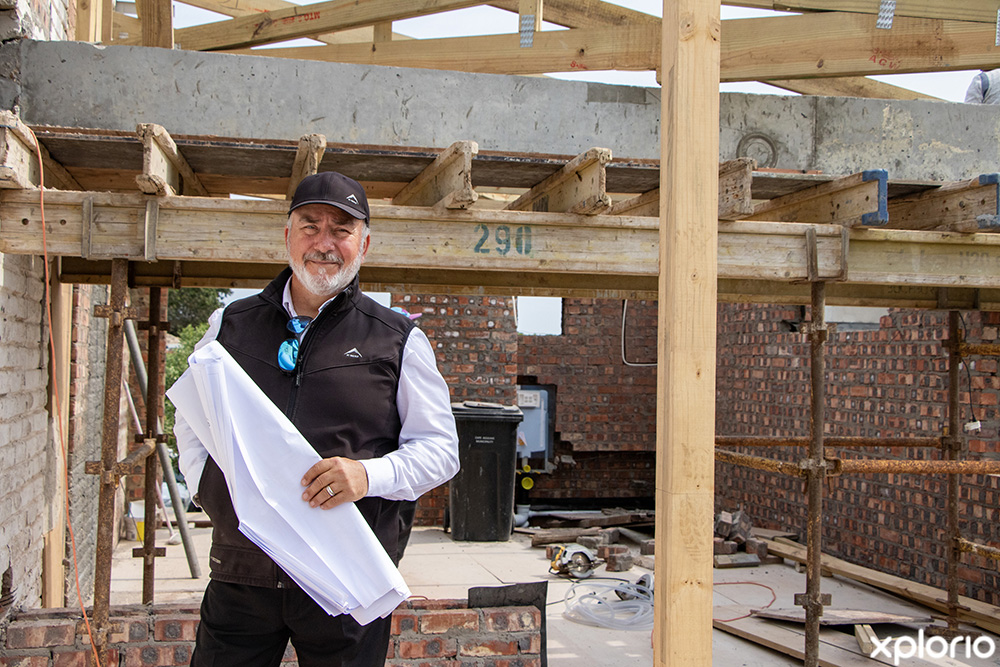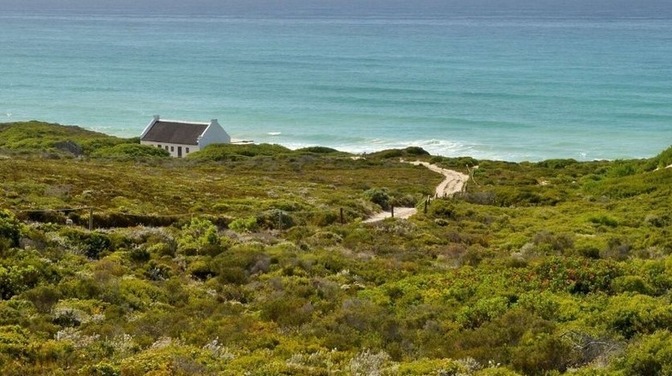Help, My Roof is Leaking! Best Advice Q&A
Living in the Overberg means dealing with some pretty wild weather in winter, especially those north-westerly winds that whip through the region.
Between the strong gusts, sideways rain, and salty coastal air, roofs can take a real beating. And if much-dreaded leaks start, they can become more than just a nuisance. They can cause serious damage if left unchecked.
To help us better understand those unplanned indoor water features, Kent Georgala, PrEng, PrCPM (a registered professional Civil Engineer and Construction Project Manager from Omega Consulting Africa) shares the how, why, and “uh-oh” of roof leaks.
From what causes them to what can go wrong if you don’t fix them, this article has all the answers you need.
The Top 7 Roof Leak Questions Answered
Let’s dive in!
Q1: Why does my roof only leak during the winter north-westerly winds?
Kent: Those winds bring sideways rain that pushes water under tiles and into tiny gaps. Roofs are built to shed water downwards, but wind changes the game. Salt spray also speeds up corrosion on flashings and fasteners, creating weak spots. Regular inspections, especially after storms, help catch trouble early.
Q2: How can I tell if a leak is causing serious damage or just a surface stain on my ceiling?
Kent: Surface stains are warnings, but sagging ceilings, soft wood, or damp insulation mean the leak is affecting the structure. That’s when you need a professional inspection. At Omega Consulting Africa, we specialise in detailed roof assessments to find hidden damage before it becomes costly.
Q3: Can a small leak really cause big problems?
Kent: Absolutely. Even small leaks allow moisture to enter timber, causing rot, mould, and weakening beams over time. It’s like ignoring a toothache - the problem only worsens.
Q4: What are the most common causes of roof leaks in the Overberg?
Kent: Faulty flashings, loose or broken tiles, rusty fasteners, and wear from salt and UV exposure. Also, something often overlooked is clogged gutters and blocked downpipes. They cause serious water backup and leaks.
Q5: Can I fix a leaking roof myself?
Kent: Some minor things, like clearing gutters or replacing broken tiles, can be DIY, but roofs are a dangerous place to work on. For flashing repairs, structural issues, or persistent leaks, Omega Consulting Africa advises calling a qualified engineer or contractor to avoid costly mistakes and accidents.
Q6: When is it better to repair the roof, and when should it be replaced?
Kent: If your roof is older than 15 to 20 years and the leaks are persistent or if there’s structural damage, replacement is usually more cost-effective. Repairs are effective for addressing isolated damage on newer roofs.
Q7: How do I prevent leaks during the harsh Overberg winters?
Kent: It’s important to do regular inspections and maintenance before winter. Replace damaged flashings, tighten loose tiles, clear gutters, and ensure proper ventilation to prevent moisture buildup. Also, keep trees trimmed, especially those close to your home, to prevent storm damage.
What Happens If You Don’t Fix a Leak?
Kent: Well, imagine you hear a small drip and notice a watermark forming on your ceiling during one of those strong north-westerly storms. It’s easy to shrug it off. What can you do? Suddenly, it seems there is rain every other day. Maybe put a bucket under it, or ignore it until summer? But when summer comes, the drip is long gone, and going to the beach suddenly takes priority over home maintenance, right?
But here’s what is going on inside your walls and roof structure:
• Wood Rot: Water soaks into the timber beams and rafters, weakening them. Over time, this compromises the roof’s structural integrity.
• Mould and Mildew: Moisture trapped in insulation and ceilings creates the perfect environment for mould, which can affect your family’s health.
• Sagging Ceilings: As wood weakens and materials get waterlogged, ceilings start to sag and even collapse.
• Increased Repair Costs: What began as a small leak turns into a major repair project. Replacing beams, plaster, insulation, and sometimes the whole roof is the worst-case scenario.
The lesson? Don’t just add another bucket to catch those drips. Fix the root cause early. It saves money, stress, and keeps your home and family safe and dry through every storm.
And remember, persistent roof issues scare off buyers and lower the resale price if you ever decide to sell.

About Kent Georgala and Omega Consulting Africa
Omega Consulting Africa has provided professional consulting and engineering services throughout the Overberg since 2018. Based in Napier, Kent’s community-focused approach means he tailors every inspection and repair recommendation to local weather, building styles and client needs.
If you’re worried about your roof or want a thorough inspection before the next big storm, Kent and Omega Consulting Africa are ready to help you protect your home and family with expert advice you can trust.







.jpg?width=200&height=94)




























